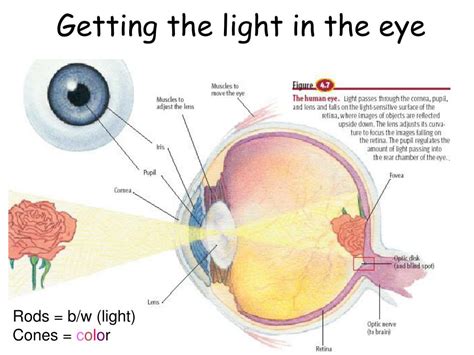Light Travels Through Eye

Introduction to the Visual System
The human visual system is a complex and highly specialized system that enables us to perceive and interpret visual information from the world around us. At the heart of this system is the eye, a remarkable organ that is capable of detecting light and converting it into electrical signals that can be interpreted by the brain. In this article, we will explore the journey of light as it travels through the eye, and how this process enables us to see the world around us.
The Structure of the Eye
The eye is a spherical organ that is composed of several layers of tissue, each with its own unique function. The outermost layer of the eye is the cornea, a transparent layer of tissue that helps to focus light as it enters the eye. Behind the cornea is the aqueous humor, a clear fluid that helps to maintain the shape of the eye and provides nutrients to the surrounding tissues. The iris, which is the colored part of the eye, controls the amount of light that enters the eye by adjusting the size of the pupil. The lens is a flexible, transparent structure that changes shape to focus light on the retina, which is the light-sensitive tissue at the back of the eye.
The Journey of Light Through the Eye
When light from an object enters the eye, it passes through the cornea and the aqueous humor, and then through the pupil. The light is then focused by the lens onto the retina, where it stimulates specialized cells called photoreceptors. There are two types of photoreceptors in the retina: rods and cones. Rods are sensitive to low light levels and are responsible for peripheral and night vision, while cones are sensitive to color and are responsible for central vision and color perception. The photoreceptors convert the light into electrical signals, which are then transmitted to the optic nerve and on to the brain, where they are interpreted as visual information.
How the Eye Focuses Light
The eye is able to focus light on the retina through a process called accommodation. This involves the lens changing shape to refract, or bend, light to the correct degree. When looking at a distant object, the lens becomes thinner, allowing the light to focus on the retina. When looking at a near object, the lens becomes thicker, allowing the light to focus on the retina. This process is controlled by the ciliary muscles, which surround the lens and adjust its shape as needed.
Common Vision Problems
There are several common vision problems that can affect the way that light travels through the eye. Myopia, or nearsightedness, occurs when the eyeball is too long, causing light to focus in front of the retina. Hyperopia, or farsightedness, occurs when the eyeball is too short, causing light to focus behind the retina. Astigmatism occurs when the cornea or lens is irregularly shaped, causing light to focus at two different points. These vision problems can be corrected with glasses, contact lenses, or refractive surgery.
🔍 Note: Regular eye exams are essential for maintaining good eye health and detecting any potential vision problems early on.
Table of Common Vision Problems
| Vision Problem | Description | Correction |
|---|---|---|
| Myopia (Nearsightedness) | Light focuses in front of the retina | Glasses, contact lenses, or refractive surgery |
| Hyperopia (Farsightedness) | Light focuses behind the retina | Glasses, contact lenses, or refractive surgery |
| Astigmatism | Light focuses at two different points | Glasses, contact lenses, or refractive surgery |
In summary, the journey of light through the eye is a complex and highly specialized process that enables us to perceive and interpret visual information from the world around us. Understanding how the eye focuses light and how common vision problems can affect this process can help us to appreciate the importance of maintaining good eye health and seeking regular eye exams.
What is the function of the cornea in the eye?
+
The cornea is the transparent outer layer of the eye that helps to focus light as it enters the eye.
What is the difference between rods and cones in the retina?
+
Rods are sensitive to low light levels and are responsible for peripheral and night vision, while cones are sensitive to color and are responsible for central vision and color perception.
How can common vision problems be corrected?
+
Common vision problems such as myopia, hyperopia, and astigmatism can be corrected with glasses, contact lenses, or refractive surgery.